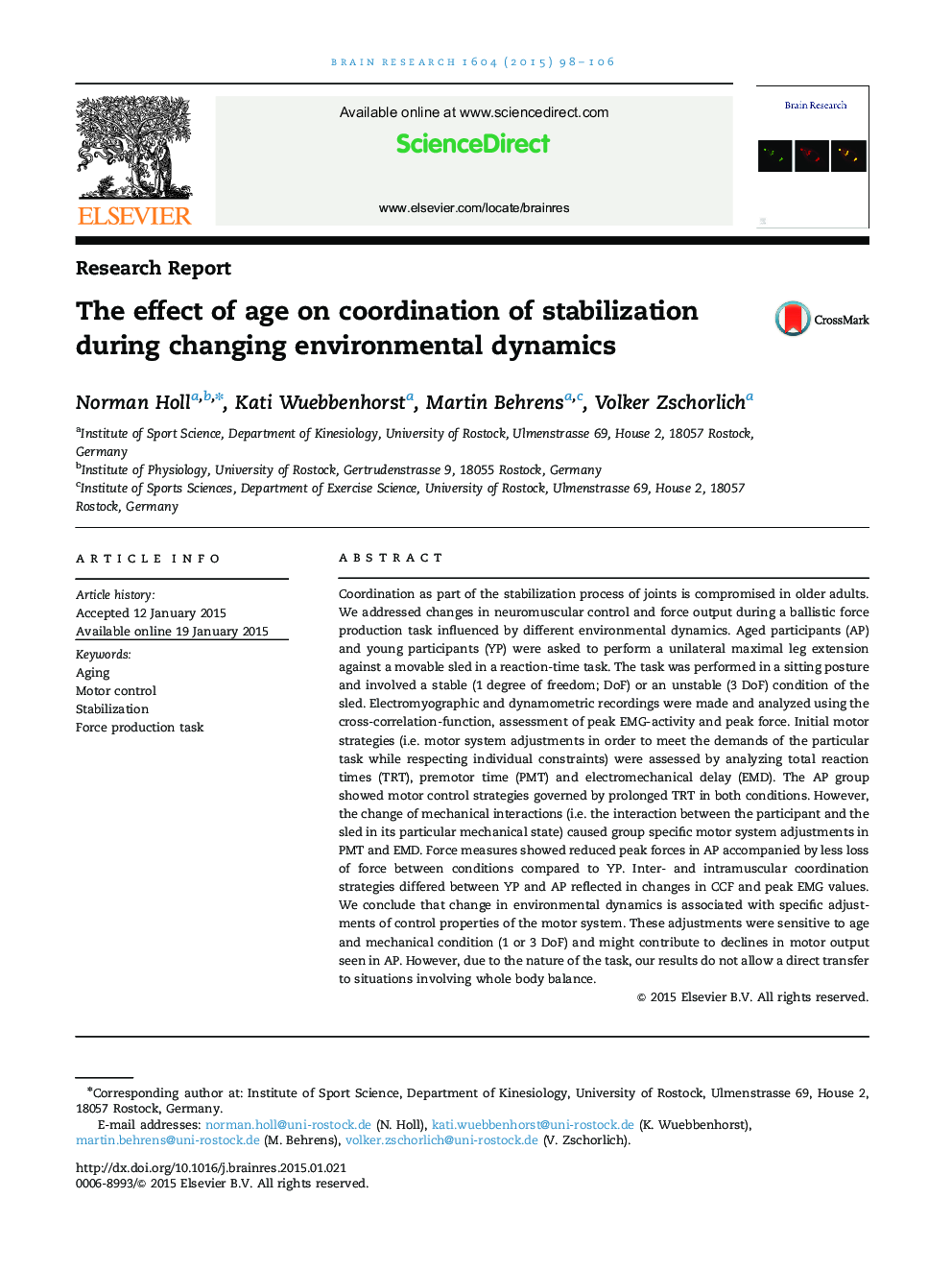| Article ID | Journal | Published Year | Pages | File Type |
|---|---|---|---|---|
| 4323837 | Brain Research | 2015 | 9 Pages |
•Aged and young participants differ in muscle coordination strategies.•These differences are sensitive to the mechanical state of the environment.•Altered control strategies contribute to motor deficiencies occurring with age.
Coordination as part of the stabilization process of joints is compromised in older adults. We addressed changes in neuromuscular control and force output during a ballistic force production task influenced by different environmental dynamics. Aged participants (AP) and young participants (YP) were asked to perform a unilateral maximal leg extension against a movable sled in a reaction-time task. The task was performed in a sitting posture and involved a stable (1 degree of freedom; DoF) or an unstable (3 DoF) condition of the sled. Electromyographic and dynamometric recordings were made and analyzed using the cross-correlation-function, assessment of peak EMG-activity and peak force. Initial motor strategies (i.e. motor system adjustments in order to meet the demands of the particular task while respecting individual constraints) were assessed by analyzing total reaction times (TRT), premotor time (PMT) and electromechanical delay (EMD). The AP group showed motor control strategies governed by prolonged TRT in both conditions. However, the change of mechanical interactions (i.e. the interaction between the participant and the sled in its particular mechanical state) caused group specific motor system adjustments in PMT and EMD. Force measures showed reduced peak forces in AP accompanied by less loss of force between conditions compared to YP. Inter- and intramuscular coordination strategies differed between YP and AP reflected in changes in CCF and peak EMG values. We conclude that change in environmental dynamics is associated with specific adjustments of control properties of the motor system. These adjustments were sensitive to age and mechanical condition (1 or 3 DoF) and might contribute to declines in motor output seen in AP. However, due to the nature of the task, our results do not allow a direct transfer to situations involving whole body balance.
